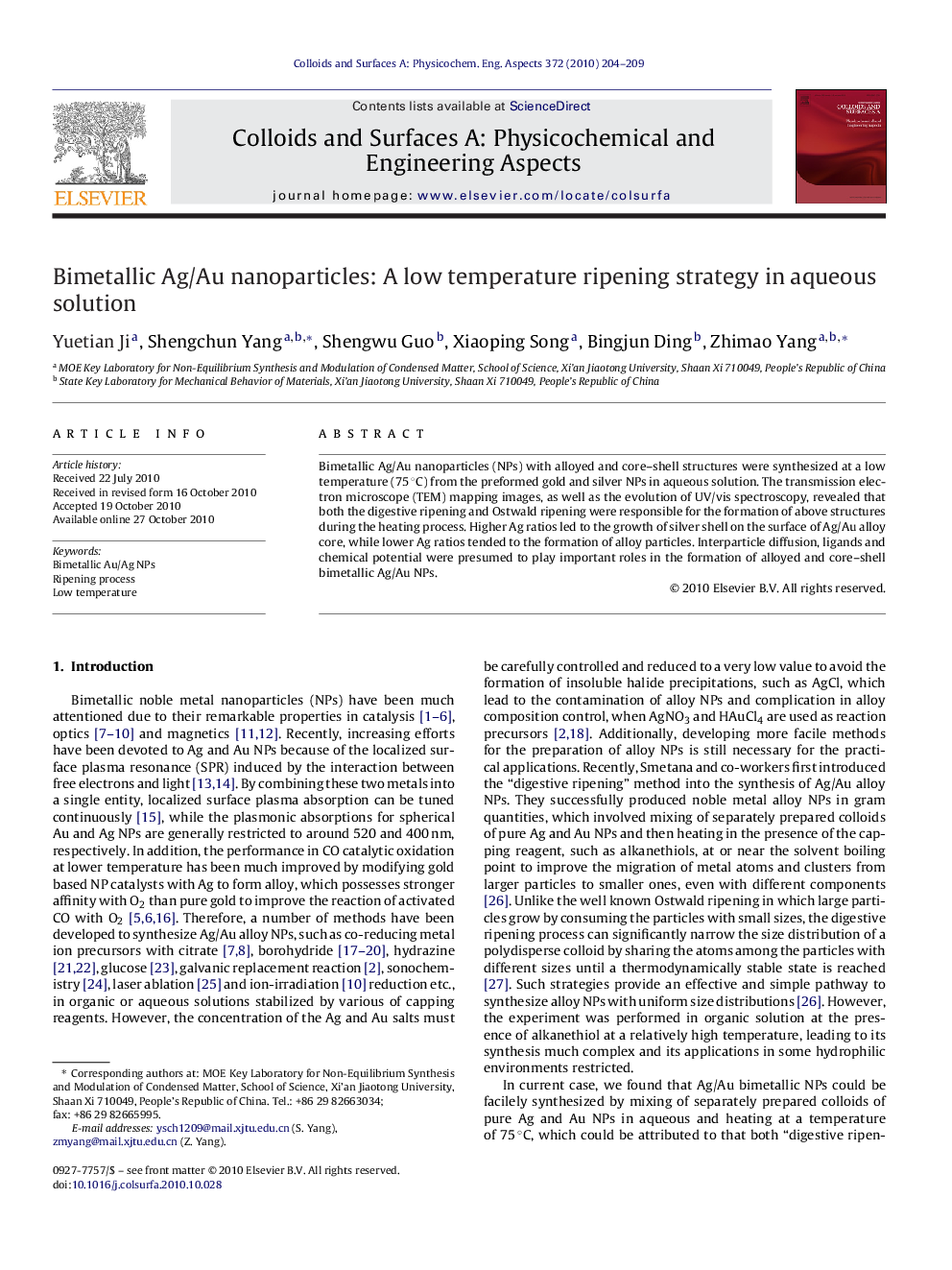| Article ID | Journal | Published Year | Pages | File Type |
|---|---|---|---|---|
| 595075 | Colloids and Surfaces A: Physicochemical and Engineering Aspects | 2010 | 6 Pages |
Bimetallic Ag/Au nanoparticles (NPs) with alloyed and core–shell structures were synthesized at a low temperature (75 °C) from the preformed gold and silver NPs in aqueous solution. The transmission electron microscope (TEM) mapping images, as well as the evolution of UV/vis spectroscopy, revealed that both the digestive ripening and Ostwald ripening were responsible for the formation of above structures during the heating process. Higher Ag ratios led to the growth of silver shell on the surface of Ag/Au alloy core, while lower Ag ratios tended to the formation of alloy particles. Interparticle diffusion, ligands and chemical potential were presumed to play important roles in the formation of alloyed and core–shell bimetallic Ag/Au NPs.
Graphical abstractFigure optionsDownload full-size imageDownload as PowerPoint slideResearch highlights▶ Bimetallic Ag/Au nanoparticles (NPs) with alloyed and core–shell structures can be synthesized at 75 °C from the preformed gold and silver NPs in aqueous solution. ▶ Both the digestive ripening and Ostwald ripening should be responsible for the formation of above structures. ▶ This method can be facilely scaled up for the bimetallic NPs synthesis.
